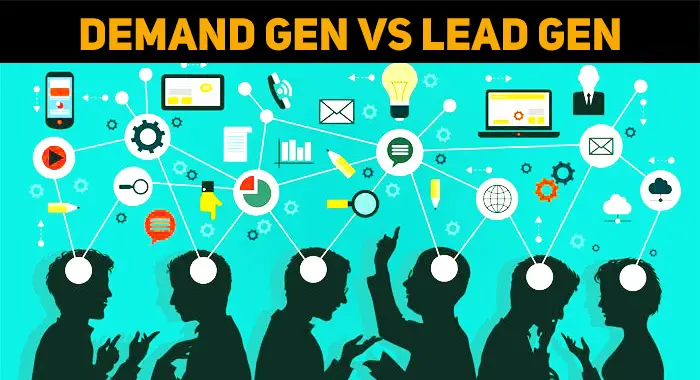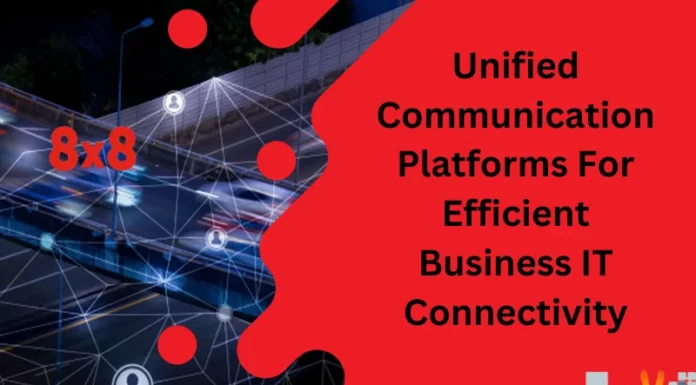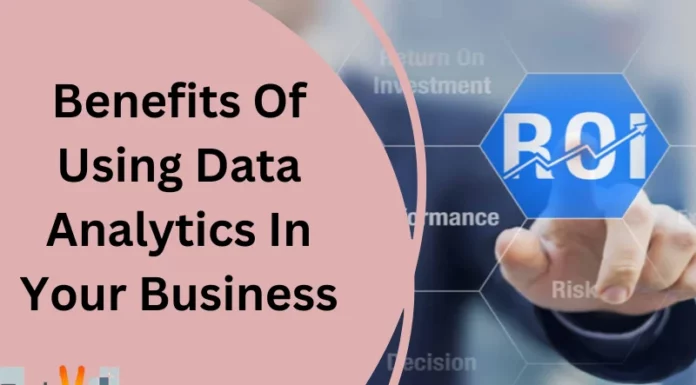Lead generation and demand generation are two of the business strategies that help businesses grow. It creates a pipeline of interested customers looking to find out more. Lead generation on the contrary, is able to identify the potential buyers and turns them into qualified leads for sales. Imagine the demand-generation process as casting an expansive open net to capture prospective buyers. Think of lead generation as refining the net in order to capture those with the highest potential.
Demand generation targets a larger market, and focuses on brand recognition and interest as determined by web traffic as well as social media interactions as well as material downloads. Lead generation is targeted at specific people or accounts. It is a matter of focusing on the conversion rate and sales-qualified leads together marketing via email marketing and landing pages as well as sales nurturing. Through understanding the differences between Demand Generation vs Lead Generation, marketing professionals can devise specific strategies that will drive the growth of their businesses and fill pipelines of sales with qualified leads increasing revenue and boosting competitiveness.
Key Points to Differentiate Between Demand Generation vs Lead Generation:
1. Objective
Demand Generation is a strategy to increase curiosity and awareness about the products and services you offer to wide audiences. It is focused on increasing the brand’s reputation and informing potential buyers about the advantages of your products or services. This is all about building interest and sustaining relationships in the course of the course of time.
Lead generation, on the contrary, is an even more precise goal collecting contact details from prospective customers. Its main goal is to collect information about potential clients that have demonstrated an amount of interest in your services, then convert leads to be nurtured until they eventually turn to sales.
2. Audience
When it comes to Demand Generation, the target of the audience tends to be larger and more ambiguous. The goal is to connect with all people who are able so that they are aware of the company. It could be that potential customers aren’t aware they are looking for the item or service that is being provided.
In contrast, Lead Generation targets a smaller and more targeted group of people. The focus is on people who already have shown a degree of engagement or interest in the company. This is a group of people who have a higher likelihood of being transformed into customers over the medium to short time.
3. Approach
The method used in Demand Generation tends to be long-term and requires multiple points of contact. Its goal is to educate and engage with the target viewers over time, forming an ongoing relationship which could ultimately lead to the purchase. It could include material marketing as well as engaging with social media, as well as thinking leadership.
For Lead Generation this strategy is more specific and usually shorter-term. The goal is to capture leads swiftly and effectively with methods like gates, content as well as email-based campaigns and direct contact. The goal is to convert the interest of a lead into contact details that can be used quickly as fast as is feasible.
4. Content Strategy
Demand Generation relies heavily on informative, high-quality material that is beneficial for the viewers. It includes whitepapers, blog articles, videos, webinars as well as social media material that are designed to inform and engage an audience of all ages. The material typically is ungated and is available for anyone.
To be used for Lead generation, material is often gated to gather contact information of the people who would like to be contacted. The material is similar (whitepapers or ebooks, for instance, as well as webinars) Access to it will require filling out an application that includes personal information. The idea is to trade valuable material for leads.
5. Metrics
The performance of Demand Generation is usually determined by various metrics, such as branding awareness, site traffic as well as social media interactions and material consumption. These indicators help to determine the degree to which a brand’s name is well-known and how engaged users are in the material offered.
Contrary to this, Lead Generation is measured through metrics such as the amount of leads gathered, conversion rates, as well as the level of lead quality. It is important to have tangible data which shows the number of potential buyers identified, and the likelihood that they will be converted into sales.
6. Funnel Stage
Demand generation activities are in the middle of the marketing funnel. These are intended to draw an audience of all sizes and create the initial excitement. The goal of this stage is increasing awareness and sparking interest in potential buyers.
Lead generation happens later in the funnel. It is targeted at those who already have shown a curiosity and are close to making a purchase decision. This is the goal of this campaign to collect these individuals’ information and guide the sale.
7. Engagement Level
Engagement of Demand Generation generally is a passive one. Its goal is to deliver important information and allow the reader to come to them when they’re willing. It might be as simple as reading the blog posts or watching a short video or following your brand’s page on social media with no immediate need to take the action.
In Lead Generation Engagement, it is much more intense. This usually involves direct contact with the prospect, like filling in the form or downloading an item of content and/or subscribing to the newsletter. Its goal is to trigger urgent action from the potential customer.
8. Tools and Platforms
Demand Generation strategies employ a range of devices and platforms that get your message to a wider population. It includes social media sites, material management systems, SEO tools and advertising networks. Its goal is to spread the net and draw as many users as possible.
Lead generation typically involves instruments that include CRM software and email marketing platforms, as well as Lead capture templates. These instruments are created to manage and collect the contact details of leads, making sure that leads are managed and nurtured along your sales process.
9. ROI Measurement
Calculating the return on investment for Demand Generation is complicated because it concentrates on the long-term development of the brand and the creation of awareness. It is typically seen over a longer time frame which is harder to determine precisely. The success is usually measured through a rise in brand awareness and engagement indicators.
For lead generation the measurement of ROI is simpler. It’s simpler to monitor the impact directly on revenues and sales from the captured leads. Cost per lead metrics like as well as conversion rates and cost of acquisition for customers favor an accurate indicator of the strategies’ effectiveness.
10. substance Gating
For Demand Generation, material is generally ungated in order to warrant the maximum amount of reach and interaction. The goal is to reach more people to read the content which increases the awareness and interest.
For Lead Generation, material is usually locked in order to gather contact information for leads. Prospects have to bring the contact information for access to the material. This will help establish the company contact database, enabling more interaction.
11. Nurturing Process
Demand Generation is focused on nurturing by ongoing engagement as well as education. Its goal is to maintain the viewer entertained with relevant material in the course of time, gaining trust and increasing interest over time.
Lead generation is a more targeted nurturing process. After leads have been gathered They are then typically placed in a nurturing program that includes regular follow-ups, customized emails and deals designed to guide toward a sale.
12. Sales and Marketing Alignment
Demand Generation is a complex process that requires a clear collaboration between marketing with other departments, such as development of products, development and customer service in order to warrant consistency in messaging and branding user experience.
Lead generation requires a close alignment between the sales as well as marketing teams. Marketing generates leads and sales follows up to turn them into leads. This is vital for making sure leads are effectively handled and energetically converted.
13. Resource Allocation
Allocation of resources for Demand Generation usually involves investments in material creation as well as managing social media, as well as advertising. It is the goal of creating a strong material library, as well as an effective presence on the internet.
For Lead Generation, resources are usually allocated to tools for the capture of leads and their management including CRM platforms and marketing automation platforms. It is about efficiently gathering leads and nurturing them so that they can turn them into clients.
14. Customer Path
Demand Generation initiatives are intended to impact the initial stage of the customer’s journey. The aim is to grab the attention of customers and create interest in them, thereby setting the tone for more involvement.
Lead Generation activities are more concentrated on the latter stage of the customer’s journey. The goal is to identify and convert potential customers that are close to making a purchase.
15. Impact on Sales Cycle
Demand generation has a direct impact on the sales cycle. In addition to enhancing brand awareness and engaging the target audience it creates a solid foundation for future sales, but it does not instantly translate into conversions.
It has a direct effect on the sales cycle. Through the capture and nurture of leads that are nurtured, the lead generation process is shortened from time to time to convert and contributes directly to the growth of sales.
Conclusion
Knowing the distinctions in Demand Generation vs Lead Generation will be essential for creating a successful marketing strategy. Both are crucial elements of a successful marketing strategy, they have various purposes and demand distinct approaches. If you combine both of these strategies correctly companies can create a solid marketing system that can drive long-term success and growth.
For the perfect results of these methods, you should consider using tools to increase the effectiveness of these strategies. As an example, together a company contact database could greatly boost the effectiveness of your Lead Generation efforts by ensuring that your staff has access to up-to-date and accurate data about prospects. If you’re interested in improving your marketing methods, try Lusha for absolutely free and see the ways it could assist you in creating a strong company contact database and boost the success of your lead generation.


















